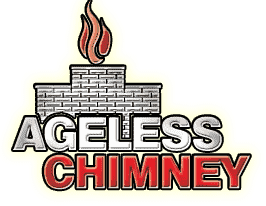Chimney Sweep in Wall Street, NY
What our clients say




Read About Us
Browse Masonry & Brickwork
contact us
How Often Should You Schedule a Chimney Sweep?

Why Regular Chimney Sweeping Matters
Regular chimney sweeping is crucial for maintaining the safety and efficiency of your fireplace or stove. Over time, creosote buildup can lead to chimney fires or blockages, compromising the functionality of your heating system. By scheduling routine chimney sweeps with Ageless Chimney using our phone number 516-795-1313, you ensure that your chimney stays clear and safe for use throughout the year.
Certified Technicians
Our team consists of certified chimney sweeps who have the expertise to handle any chimney cleaning or inspection needs.
Customer Satisfaction
We prioritize customer satisfaction, ensuring that every chimney sweep service is performed to the highest standards.
Transparent Pricing
With Ageless Chimney, you'll receive transparent pricing and no hidden fees, giving you peace of mind throughout the service process.

Factors Influencing Sweep Frequency
Determining how often to schedule a chimney sweep in Wall Street, NY involves considering several key factors. Firstly, the type of fuel you burn plays a significant role. If you primarily use wood in your fireplace or stove, creosote buildup occurs more rapidly compared to cleaner fuel sources like gas. Consequently, wood-burning appliances typically require more frequent sweeps, ideally at least once a year, to remove creosote deposits and ensure safe operation in you New York City home.
Secondly, the frequency of chimney use affects the need for sweeping. If you frequently enjoy cozy fires during the colder months in Wall Street, NY, your chimney will accumulate soot and debris more quickly than one used infrequently. In such cases, scheduling a chimney sweep annually is advisable to prevent blockages and maintain optimal airflow. However, if your chimney sees less use, such as in warmer climates or with secondary heating sources, sweeping may be required less often.
Lastly, the condition of your chimney impacts sweep frequency. Older chimneys or those in disrepair in Wall Street, NY may develop structural issues or excessive creosote buildup more rapidly, necessitating more frequent inspections and cleanings. By assessing these factors alongside the recommendations of qualified chimney professionals in Wall Street, NY, you can determine the most suitable schedule for chimney sweeps tailored to your specific needs and circumstances.

Professional Chimney Sweep Services
When it comes to chimney maintenance in Wall Street, NY, entrusting the job to professionals ensures thorough and reliable results. At Ageless Chimney, our team of highly trained technicians specializes in providing comprehensive chimney sweep services tailored to meet the specific requirements of homeowners in New York City. We understand the importance of regular chimney maintenance in preserving the safety and efficiency of your heating system, which is why we employ advanced equipment and proven techniques to deliver exceptional results with every sweep.
During a chimney sweep service in Wall Street, NY, our certified technicians conduct a detailed inspection of your chimney to assess its condition and identify any potential issues. Using specialized tools and brushes, we meticulously remove creosote, soot, and debris from the flue and chimney liner, eliminating fire hazards and improving airflow. Additionally, we inspect the chimney cap and flashing to ensure proper function and address any concerns that may compromise the integrity of your chimney system in New York City.
By choosing Ageless Chimney for your chimney sweep needs in Wall Street, NY, you can rest assured knowing that your chimney is in capable hands. Our commitment to quality craftsmanship, attention to detail, and customer satisfaction sets us apart as the premier choice for chimney sweep services in New York City. Schedule your chimney sweep with us today and experience the difference firsthand.
Have a question?
Wall Street is a street in the Financial District of Lower Manhattan in New York City. Eight city blocks long, it runs between Broadway in the west to South Street and the East River in the east. The term “Wall Street” has become a metonym for the financial markets of the United States as a whole, the American financial services industry, New York-based financial interests, or the Financial District itself. Anchored by Wall Street, New York has been described as the world’s principal financial and fintech center.
